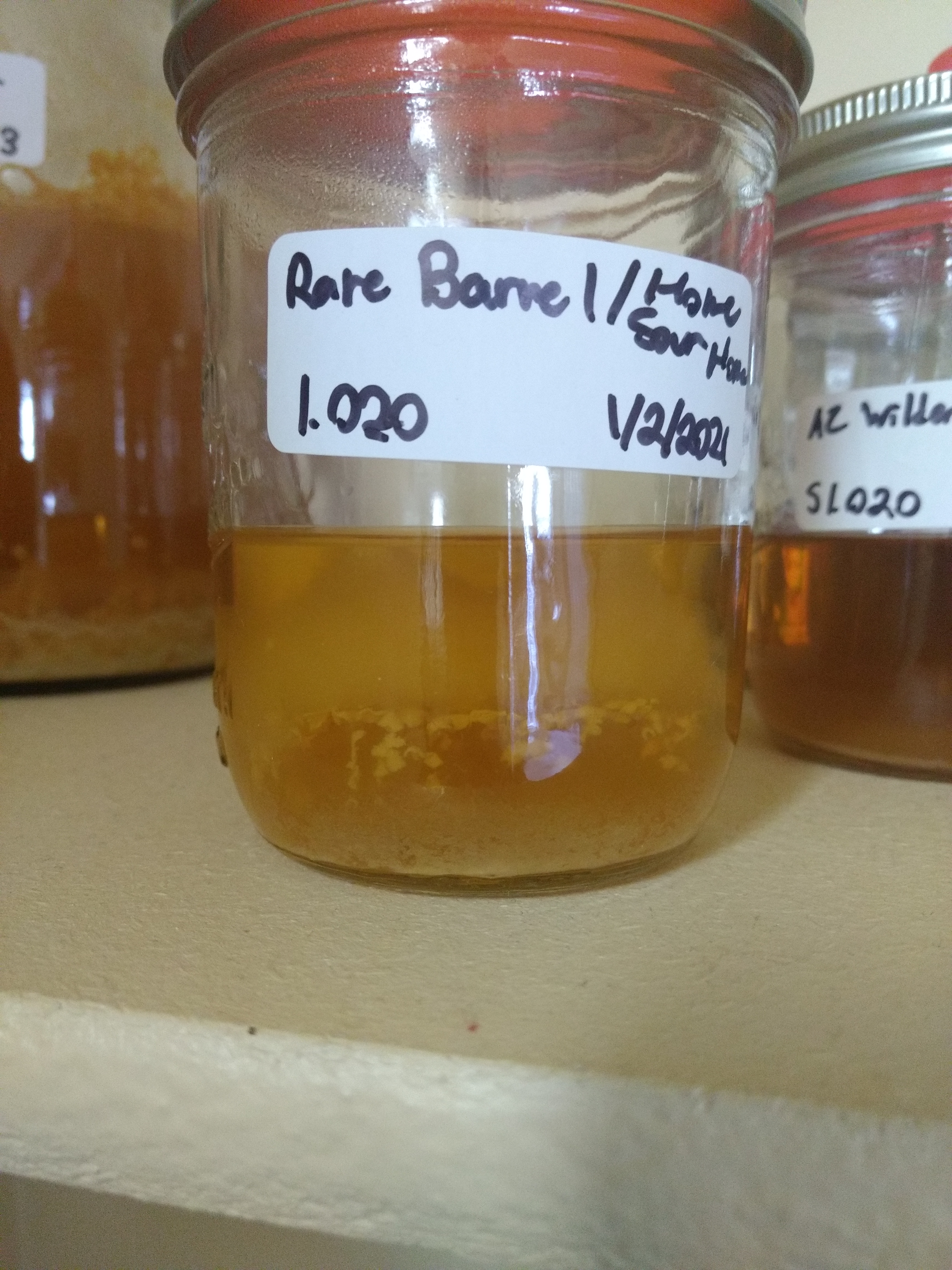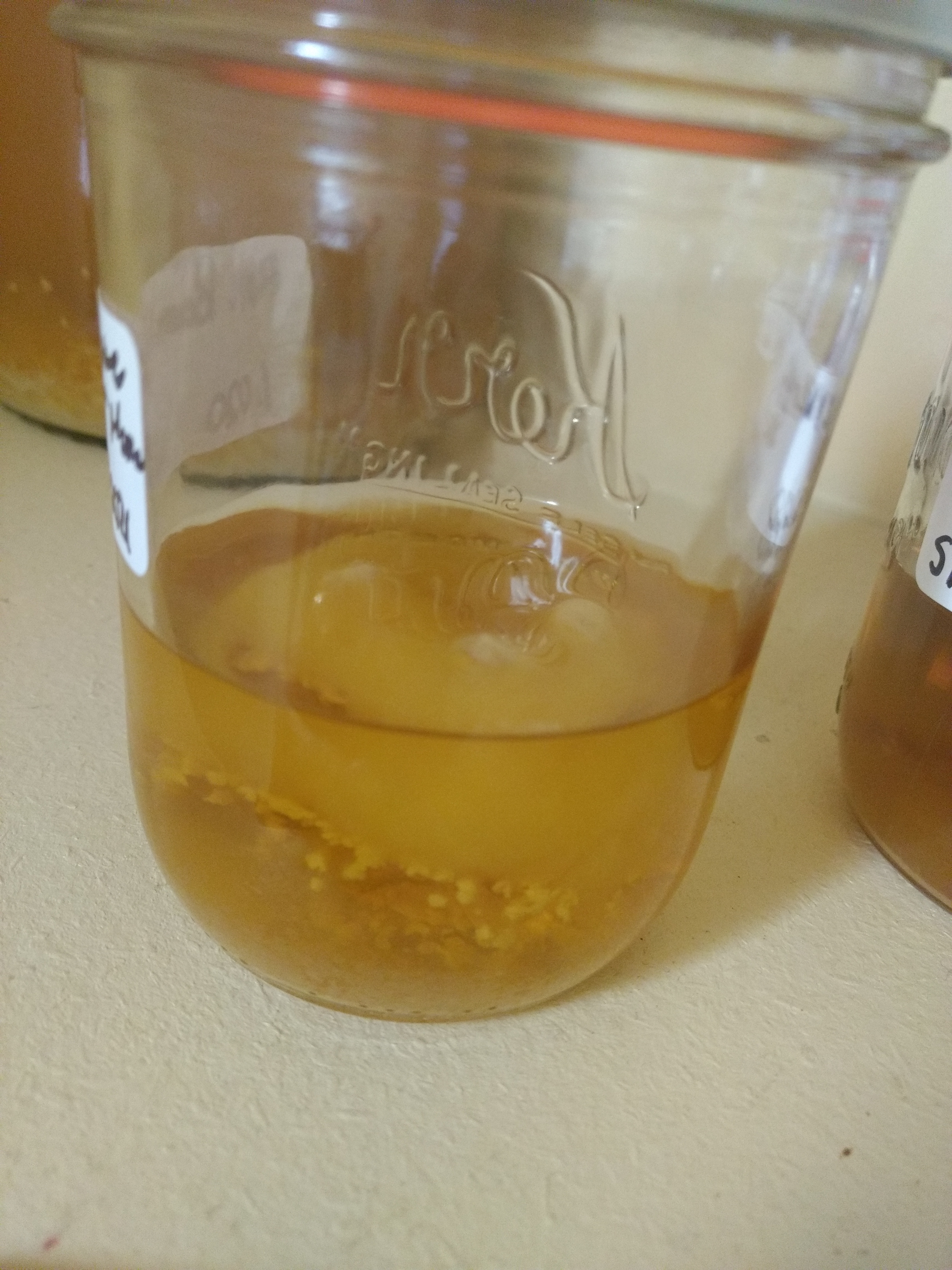Hi all,
What do you think this is?


I have some bottle dregs I poured into 125ml of 1.020 wort. It has been sitting for 7 days. I read one person saying these dregs yielded a low pH wort with minimal attenuation, so I'm wondering if this growth is some sort of Pediococcus exocellular polysaccharide structure? It looks almost like a SCOBY, but it's mostly below the surface versus the typical pellicle across the top.
Thanks!
What do you think this is?


I have some bottle dregs I poured into 125ml of 1.020 wort. It has been sitting for 7 days. I read one person saying these dregs yielded a low pH wort with minimal attenuation, so I'm wondering if this growth is some sort of Pediococcus exocellular polysaccharide structure? It looks almost like a SCOBY, but it's mostly below the surface versus the typical pellicle across the top.
Thanks!



